An Introduction to Phonetic Analysis/ Una Introducción al Análisis.
I found the book An Introduction to Phonetic Analysis by Imelda Udoh sitting quietly in my father’s old library shelf one afternoon. It wasn’t wrapped in plastic or freshly printed. It had already been touched by time. Some corners of the cover were folded and the pages slightly brown at the edges. But the title stood out to me. I didn’t pick it up because I was studying linguistics or because someone asked me to. I picked it up because I was curious. And I’m grateful I did.
I am currently studying History at the University of Uyo. My focus is usually on past events, empires, colonialism, independence, and national identities. But finding this book brought me into a different kind of journey, a journey into sound. And as I read, I started to understand that language is not just a tool for historians to decode oral tradition. Language itself is history. And phonetics, as this book teaches, is the science that helps us make sense of how humans speak.
Imelda Udoh starts the book by explaining what phonetics is. She doesn’t make it complicated. She makes it feel human. Phonetics is the study of speech sounds. Simple. Yet so deep. She breaks it into three main parts. Articulatory phonetics which focuses on how sounds are produced. Auditory phonetics which looks at how we hear those sounds. And acoustic phonetics which focuses on the physical nature of sound like waves and frequency. These are not things I usually think about. But the more I read, the more they made sense.
One of the things that stayed with me was the way the book talks about the parts of the body involved in producing speech. The tongue. The teeth. The lips. The vocal cords. The nose. Even the lungs. Everything plays a role. When we speak, we are doing something complex and intelligent without even knowing it. I began to appreciate how deep human communication is.
Imelda Udoh uses the International Phonetic Alphabet in a way that makes it feel less foreign. She explains the symbols clearly and gives examples from Nigerian languages and English. I was surprised to see familiar sounds written in a new form. It made me think of how many times we speak but do not understand what is actually happening in our mouths. I thought about my grandmother who only speaks Ibibio. Her words carry history. If we could write them out phonetically, they would never be lost.
Another part of the book that caught my attention was the section on vowels and consonants. She doesn’t just list them. She explains their qualities, their positions, and their functions in speech. And she doesn’t limit her examples to English alone. She brings in Yoruba, Hausa, Ibibio, and Efik. This made the book feel like home. It reminded me that our languages here in Nigeria are just as structured and scientific as any foreign language.
What I enjoyed most was that the book didn’t try to show off. It is written in a simple way. You don’t need to be a linguist to understand it. It teaches you to listen closely to the sounds of your language and the way people around you speak. It made me start observing conversations differently. I found myself thinking about tone, rhythm, pauses, and pronunciation even in normal speech.
Reading this book also made me think about the danger of language loss. In a country like Nigeria where many young people now speak only English or Pidgin, the mother tongues are slowly disappearing. Phonetic analysis gives us a tool to record these languages before they go. We can write them in a way that preserves their original sounds. That is powerful. That is urgent.
Imelda Udoh’s book is not just about theory. It comes with practice exercises and examples that guide you. You don’t just read. You participate. You try out symbols. You pronounce words. You check your own understanding. It feels like a personal class.
As someone from a history background, this book has helped me see the connection between speech and memory. Between pronunciation and culture. It reminded me that even before something is written down, it is first spoken. If we lose the way our people speak, we lose the original voice of their stories.
Now that I’ve read the book, I’ve placed it on a different shelf in my room. It’s no longer just my father’s book. It’s become part of my own journey. I encourage anyone who finds this book to take it seriously. Whether you’re a student of language or not, there’s something inside it for you. You begin to see the beauty in ordinary things like sound. You realize that our languages deserve respect and scientific attention.
An Introduction to Phonetic Analysis is a quiet book, but its message is loud. It is a call to listen. To preserve. And to understand that every word we speak is shaped by centuries of history and human invention. I found this book by chance, but I’ll never forget what it taught me. And one day, I hope to pass it on just the same way I found it.
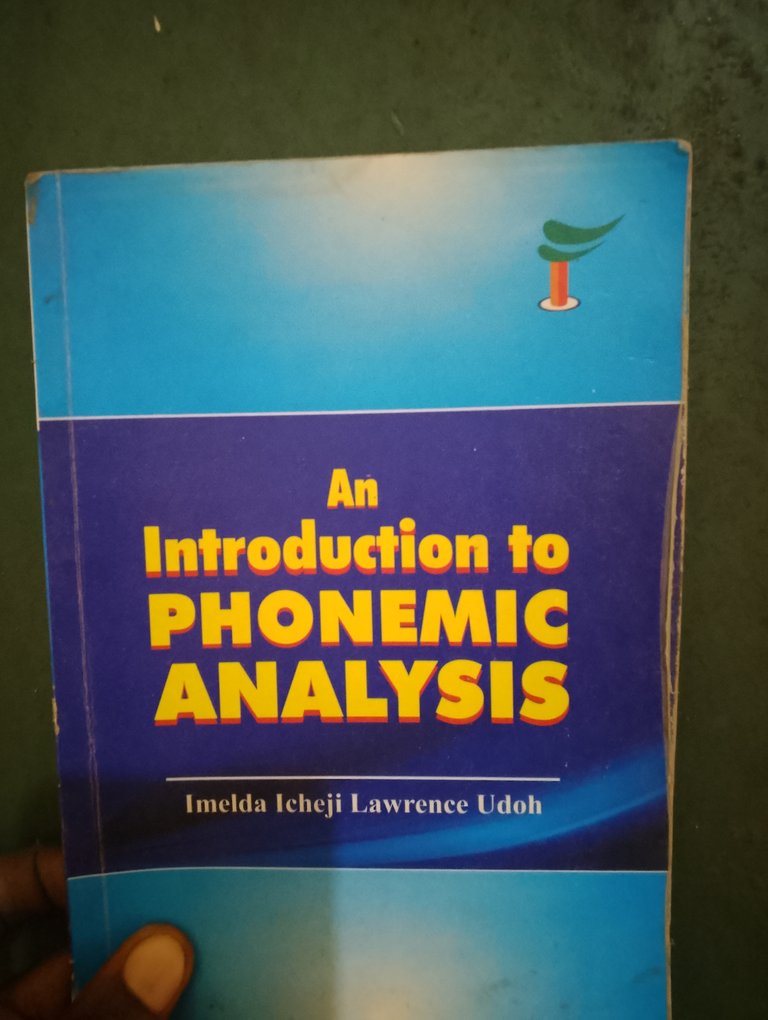
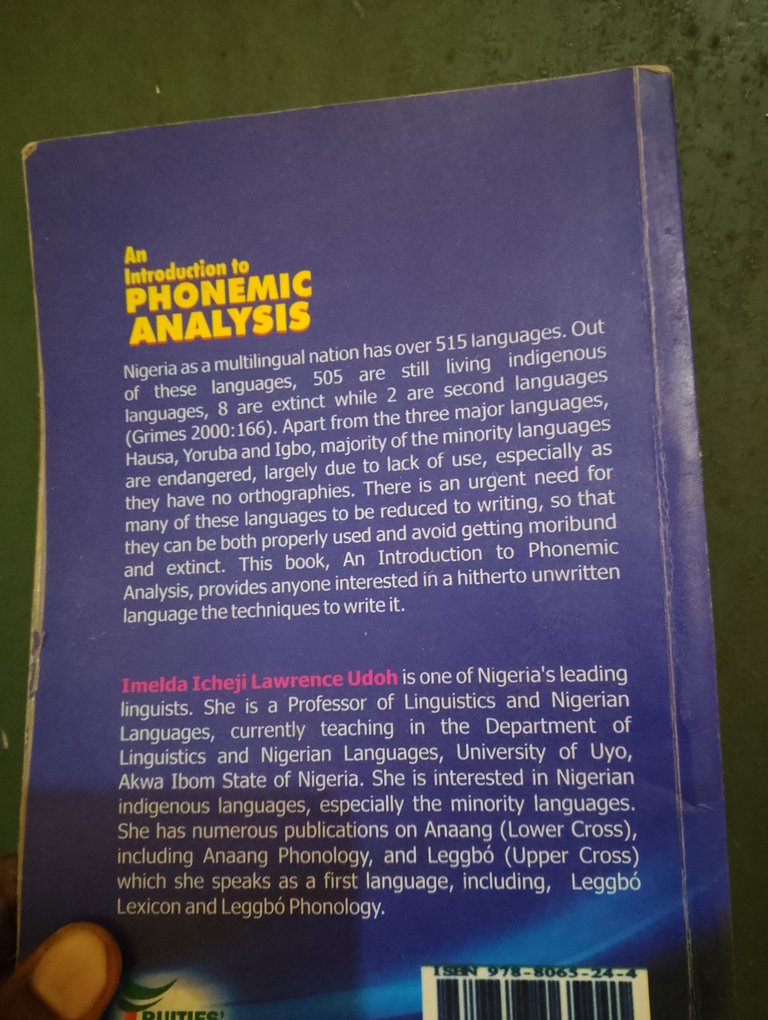
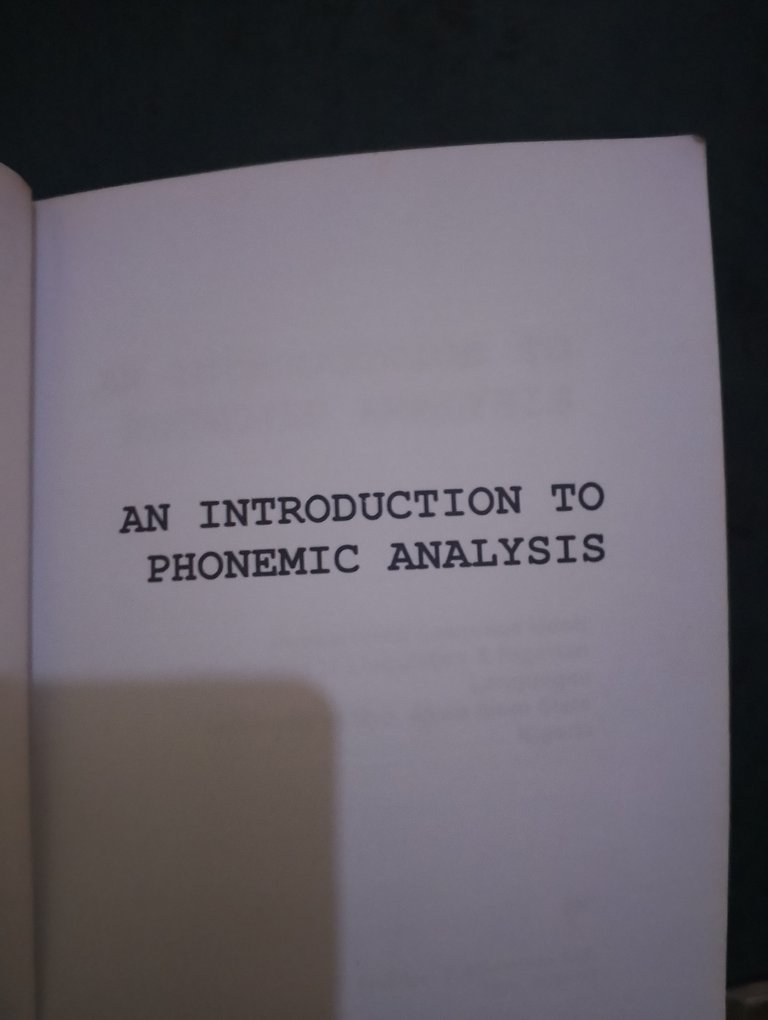
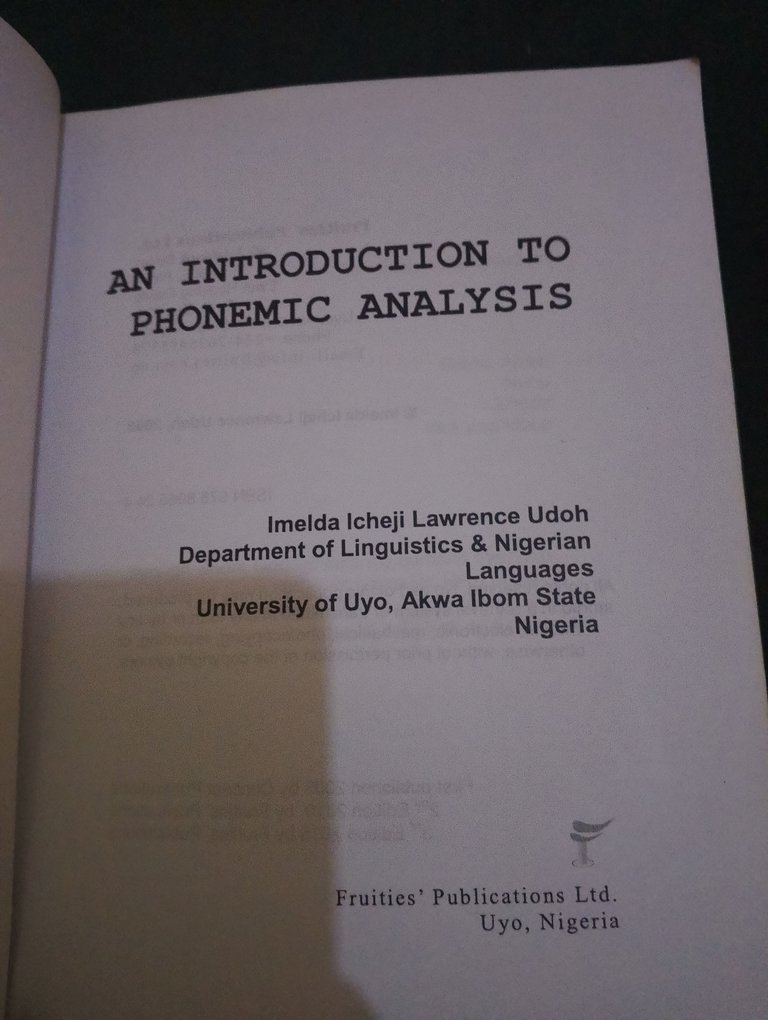
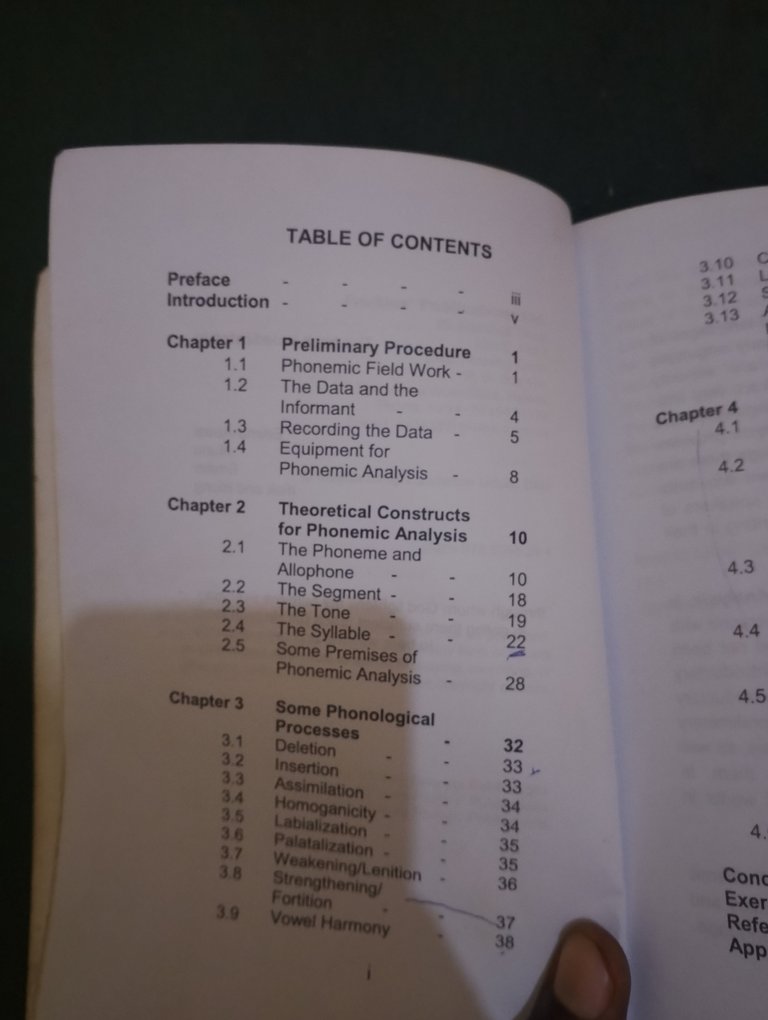

Una Introducción al Análisis Fonético por Imelda Udoh.
Encontré el libro Una Introducción al Análisis Fonético de Imelda Udoh en la vieja biblioteca de mi padre una tarde tranquila. No era un libro nuevo ni brillante. De hecho, algunas esquinas estaban dobladas, y las páginas ya tenían ese color marrón claro que el tiempo deja sobre el papel. Pero el título me llamó la atención. No lo tomé porque estuviera estudiando lingüística o porque alguien me lo pidiera. Lo tomé por simple curiosidad. Y ahora que lo he leído, puedo decir que fue una de las mejores decisiones que tomé por mí mismo.
Actualmente estudio Historia en la Universidad de Uyo. Suelo enfocarme en eventos pasados, imperios antiguos, la colonización, la independencia y los procesos de formación nacional. Pero al abrir este libro, comencé un viaje completamente diferente. No era un viaje hacia el pasado escrito, sino hacia el mundo de los sonidos. Y mientras leía, entendí que el lenguaje no es solo una herramienta que los historiadores usan para acceder a tradiciones orales. El lenguaje en sí es historia. Y la fonética, como lo explica este libro, es la ciencia que nos permite entender cómo hablamos los seres humanos.
Imelda Udoh empieza su obra explicando qué es la fonética. No lo hace de forma difícil ni abstracta. Lo hace cercana. Humana. La fonética es el estudio de los sonidos del habla. Así de sencillo y así de profundo. Luego divide esta ciencia en tres partes principales. La fonética articulatoria, que analiza cómo se producen los sonidos. La fonética auditiva, que se enfoca en cómo los escuchamos. Y la fonética acústica, que estudia las propiedades físicas del sonido como la frecuencia y la intensidad. Nunca antes había pensado en estas cosas. Pero a medida que avanzaba en la lectura, todo comenzaba a tener sentido.
Uno de los aspectos que más me impactó fue cómo el libro describe las partes del cuerpo que usamos al hablar. La lengua, los dientes, los labios, las cuerdas vocales, la nariz, los pulmones. Todo participa. Hablar no es algo simple. Es una acción compleja, precisa y cargada de inteligencia. A veces lo hacemos sin pensarlo, pero este libro me ayudó a ver la belleza de ese proceso natural.
La autora también introduce el Alfabeto Fonético Internacional (AFI) de forma clara. No lo presenta como algo distante o difícil, sino como una herramienta que todos podemos aprender. Incluye ejemplos tomados de lenguas nigerianas como el yoruba, el hausa, el efik y el ibibio, además del inglés. Me sorprendió ver sonidos familiares escritos de una manera completamente nueva. Me hizo pensar en cómo hablamos sin ser conscientes de lo que realmente ocurre en nuestra boca. Pensé en mi abuela, que solo habla ibibio. Sus palabras están llenas de historia. Si pudiéramos transcribirlas fonéticamente, nunca se perderían.
El capítulo sobre vocales y consonantes también fue muy interesante. No se limita a nombrarlas. Imelda Udoh explica sus características, sus posiciones dentro de la boca y su papel en el habla. Lo mejor es que no se enfoca solamente en el inglés. Muestra cómo estos sonidos existen y funcionan en nuestras lenguas nativas. Eso hizo que el libro me resultara cercano, familiar, mío.
Lo que más me gustó fue que el libro no intenta impresionar con palabras difíciles. Habla con claridad. Está escrito para personas reales, no solo para especialistas. Me hizo observar mejor cómo habla la gente a mi alrededor. Empecé a notar cosas como la entonación, las pausas, el ritmo, los cambios en la pronunciación. Incluso en conversaciones normales, ya veía elementos fonéticos en acción.
También me hizo pensar en el peligro que enfrentan nuestras lenguas. En Nigeria muchos jóvenes ya no hablan sus idiomas maternos. Prefieren el inglés o el pidgin. Con el tiempo, muchas lenguas están desapareciendo. El análisis fonético nos da una forma de conservarlas. Podemos escribirlas tal como suenan. Eso me pareció algo muy poderoso.
El libro de Imelda no es solo teoría. También incluye ejercicios prácticos. Uno no solo lee, sino que también participa. Intenta escribir símbolos, pronunciar